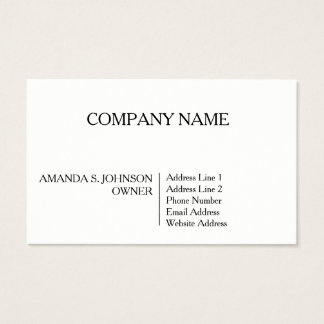- Preventable failures in predictable operations. These are caused by inadequate training, inattention, or lack of ability. They’re easy to diagnose and fix — by using a checklist, for example — but they’re not very useful.
- Unavoidable failures in complex systems. Small process setbacks are inevitable, so considering them failures is counterproductive. They can usually be averted by following best practices for safety and risk.
- Intelligent failures at the frontier. These good failures happen as a result of forward-thinking innovation. They provide valuable knowledge that can help you get ahead of the competition. But they can become bad failures if your organization starts working at a larger scale than is necessary.
15% Off All Business Cards
VIEW ALL
$44.25
$58.55
$68.95
$65.40
$60.05





No comments:
Post a Comment